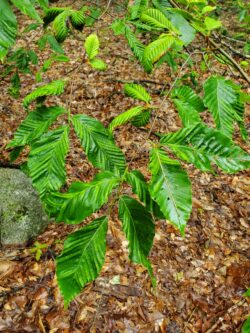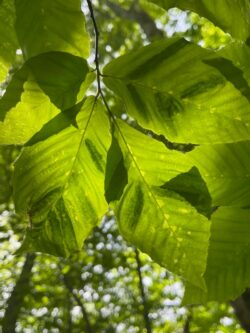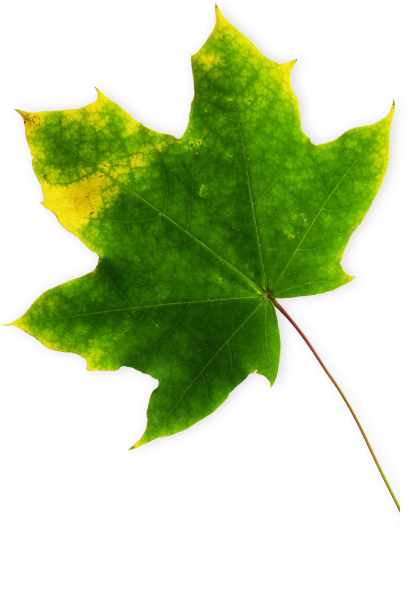There is a new disease killing beech trees in our area called beech leaf disease (BLD). Unlike most diseases of trees that are caused by a fungus. BLD is caused by a foliar feeding nematode Litylenchus crenatae mccannii. Both European beech (Fagus sylvatica) and American beeches (Fagus grandifolia) may be affected. The disease was first discovered in the United States in Ohio 2012. The first detection in Massachusetts was observed in 2020 in Plymouth. In just the last few years it has been found in most cities and towns in eastern Massachusetts.
The disease can be easily identified by looking at backlit leaves. Diseased leaves will have darkened bands in between the leaf veins. The leaves of infected trees will emerge in the spring with these symptoms and they will persist throughout the season. As the disease progresses leaves may become more crinkled and yellowed. Untreated, trees will become thinner over time and may die in 2-7 years, with younger trees dying more quickly.
We will continue to monitor beech trees throughout eastern Massachusetts where we are currently treating to be on the lookout for this disease as it continues to spread. If you have beech trees or know anyone with beech trees it is important to monitor closely and begin preventative treatment.
 Phosphite type fungicides help to encourage an increase in plant defensive chemicals. These fungicides are systemic and applied either to the lower trunk of the tree or drenched into the soil twice per year. These treatments can help to prevent infection from beech leaf disease as well as bleeding cankers caused by Phytophthora which is also a significant problem for beech trees.
Phosphite type fungicides help to encourage an increase in plant defensive chemicals. These fungicides are systemic and applied either to the lower trunk of the tree or drenched into the soil twice per year. These treatments can help to prevent infection from beech leaf disease as well as bleeding cankers caused by Phytophthora which is also a significant problem for beech trees.- There are also foliar treatments now that can be effective against these leaf-feeding nematodes when applied in the late spring/early summer and again in the early fall before the nematodes make their way into next year’s buds.
- Regular fertilizing can also help to improve the soil by incorporating organic materials to feed beneficial fungi and bacteria. Healthy soil will provide all the nutrients needed for healthy growth and recovery from stress.
- Plant growth regulator application can again direct more of the tree’s energy into self-defense and rooting improving the trees’ resistance to infection. This treatment can last up to 3 years and is a way to manage tree growth as well as disease and cultural stresses like drought etc.
If you are concerned about your beech trees and would like a quote for these treatment options call or email our office and an Arborist can come out and make recommendations. We are still learning about this disease and are in contact with extension services and other authorities researching this problem. As we learn more and recommendations change, we will adapt as well. For more information, you can visit the state website https://www.mass.gov/guides/beech-leaf-disease-in-massachusetts.

